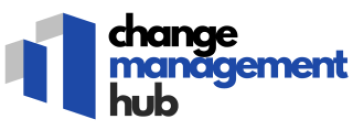
Defining Auditability in Change Management
Clarifying Auditability in the Change Management Landscape
Understanding auditability in change management is vital for enhancing transparency across an organization's processes. At its core, auditability refers to the capacity of a company, especially within its change management strategies, to demonstrate the integrity and compliance of its activities. This entails maintaining an audit trail, showcasing key data and actions that ensure accountability and security measures are respected. The concept stems from the broader field of auditing, which encompasses various aspects, including internal audits, external audits, and the review of financial statements. With internal controls and rigorous risk management processes, auditability becomes a crucial component to verify that organizational changes align with set goals and regulatory requirements. Auditability is not just limited to determining what audits are necessary but extends to ensuring that each step within a change management process can be tracked and validated. By solidifying compliance and minimizing audit risk, businesses can ensure that their change initiatives are both effective and credible. As companies navigate the complex landscape of change management, it's essential to understand the foundational elements of auditability, which echo through other critical sections such as ensuring transparency, implementing effective practices, and overcoming implementation challenges. To delve deeper into the foundational role of project managers in facilitating these audit processes, consider exploring more on the crucial role of a project manager.The Role of Auditability in Ensuring Transparency
The Importance of Transparency in Change Management
Auditability plays a crucial role in ensuring transparency within change management processes. By maintaining a clear audit trail, organizations can track every step of a change initiative, from initial planning to execution. This transparency is vital for both internal audits and external audits, as it provides a comprehensive view of the changes made and their impacts on the organization.
Transparency in change management helps in several ways:
- Risk Management: By providing a clear audit trail, companies can better assess and manage potential risks associated with change initiatives. This is crucial for both internal controls and risk assessment processes.
- Compliance: Ensuring that all changes are documented and auditable helps organizations meet regulatory requirements and maintain compliance with industry standards.
- Data Integrity: A transparent audit process ensures that data used in decision-making is accurate and reliable, which is essential for effective financial reporting and accounting.
- Stakeholder Trust: Transparency builds trust among stakeholders, including employees, management, and external parties, by demonstrating accountability and openness in the change management process.
For more insights on how transparency can be integrated into change management, consider exploring the procurement shared services model, which offers valuable lessons on maintaining transparency and efficiency.
Key Elements of Effective Auditability
Core Aspects of Implementing Comprehensive Audits
Understanding the fundamentals of auditability within change management is pivotal for any organization. To ensure transparency and accountability, certain key elements must be firmly in place.- Robust Audit Trails: Audit trails serve as the backbone of auditability, enabling the tracking of every change made within systems and processes. These trails are crucial in assessing the history of changes, ensuring data integrity, and facilitating risk management.
- Internal Controls and Compliance: Establishing internal controls is essential for effective auditability. These controls not only help in maintaining compliance with financial and regulatory standards but also form the bedrock of internal audits. By doing so, they ensure that all changes align with the organization's objectives and legal requirements.
- Integration of Data Analytics: Leveraging data analytics in the auditing process can significantly enhance the depth and scope of audits. Analytics help in identifying patterns, inconsistencies, and potential risks, thereby supporting both internal and external audits. This approach aids in producing more insightful audit reports and improving financial reporting accuracy.
- Risk Assessment and Management: Performing a thorough risk assessment prior to implementing changes helps in identifying potential audit risks. By understanding what audit trails reveal about business operations, companies can better prepare for both internal and external audits, minimizing discrepancies and maximizing security.
- Clear Auditing Processes: Having a well-defined audit process ensures that both internal and external auditors can effectively evaluate company financial statements. It is vital for organizations to document each step meticulously to assist auditors in verifying compliance and security.
Challenges in Implementing Auditability
Overcoming Roadblocks in Auditability Implementation
Implementing auditability within change management processes can be fraught with obstacles. When striving for internal and external audit effectiveness, companies must navigate potential challenges to maintain transparency and ensure compliance. One common hurdle is aligning audit trails with established protocols in data management and storage. Organizations frequently face difficulties in ensuring that audit trails are consistently and accurately recorded, particularly when data comes from multiple sources and needs to be integrated into a unified system. This integration requires robust internal controls and meticulous process management, which can be demanding. Moreover, the sheer volume of data generated during change initiatives can overwhelm internal audit teams. Individuals responsible for auditing must not only trace and document each step of the process but also analyze vast datasets to identify discrepancies or incongruities in financial reporting or compliance. This aspect of auditing becomes even more complex when companies rely on outdated systems without proper data analytics capabilities. Another significant obstacle is the potential for compliance risks that arise from insufficient management of audit processes. Without clearly defined procedures, companies might face audit risk where discrepancies occur unnoticed, potentially impacting both financial statements and the reputation of the organization. External audits conducted under unclear conditions often exacerbate the problem, complicating external auditors' ability to provide accurate audit reports. Addressing the disparity between internal and external audit perspectives is crucial. External auditors might not fully understand the intricacies of a company's internal processes, which could lead to misinterpretations or inaccuracies in audit reports. To mitigate these challenges, organizations often need to invest in training for external audits, ensuring they are informed and aligned with the internal perspectives and objectives. The complexity of fully implementing auditability in change management is undeniable. However, by understanding these challenges and addressing them with strategic solutions, organizations can ensure they are better equipped to handle audits, comply with regulatory demands, and maintain the integrity of their financial data.Best Practices for Enhancing Auditability
Adopting Robust Internal Controls
To enhance auditability within change management, establishing strong internal controls is essential. These controls are the backbone of ensuring that a business's processes are transparent and compliant with regulatory standards. Internal controls help mitigate audit risks by identifying and addressing any inconsistencies or anomalies in data and procedures before external audits uncover them.
Leveraging Data Analytics
Incorporating data analytics into the auditing process can significantly improve the identification and assessment of risks. By analyzing large sets of data, organizations can create a more detailed audit trail, thereby facilitating a more thorough audit. This can enhance both internal audit and external audit effectiveness, providing detailed insights into financial statements and company financial health.
Ensuring Clear Audit Trails
Maintaining a clear and comprehensive audit trail is crucial for achieving transparency. This involves a detailed record of all changes and updates made within the organization's processes. A solid audit trail allows for efficient tracking and verification of changes, reducing the potential for financial misstatements and reinforcing compliance standards.
Training and Education
Training employees on the significance of auditability in change management can make a noticeable difference. By understanding the importance of risk management, financial reporting, and internal controls, staff can contribute more effectively to maintaining audit standards. Continuous education can also help in adapting to new regulatory requirements and improving overall compliance.
Proactive Risk Assessment
Conducting regular risk assessments can prevent potential hazards from escalating into significant challenges. By proactively identifying audit risks, a company can put measures in place to address them promptly. This proactive approach in the audit process strengthens both the internal and external audit functions, ensuring that companies remain ahead of potential compliance issues.













